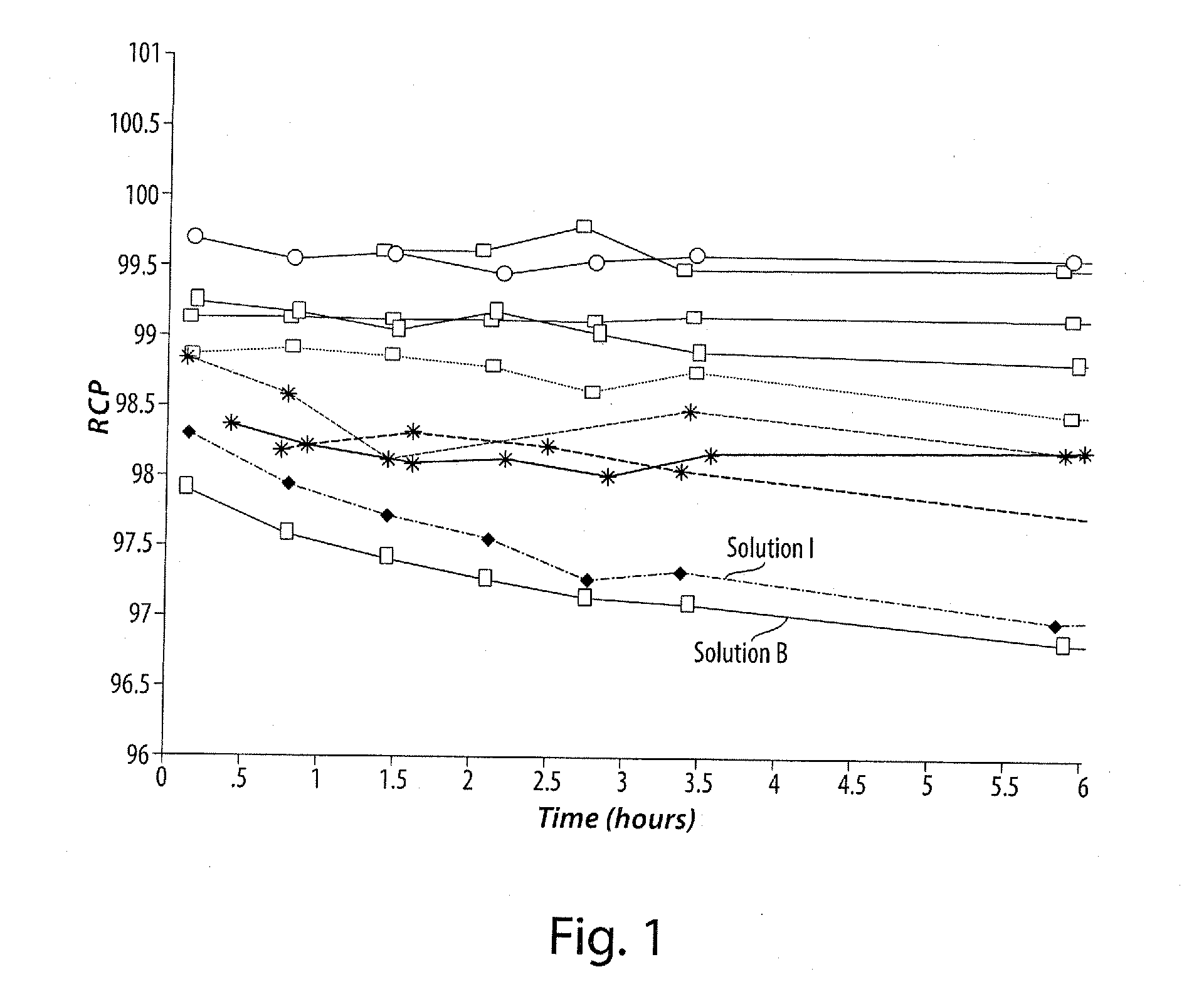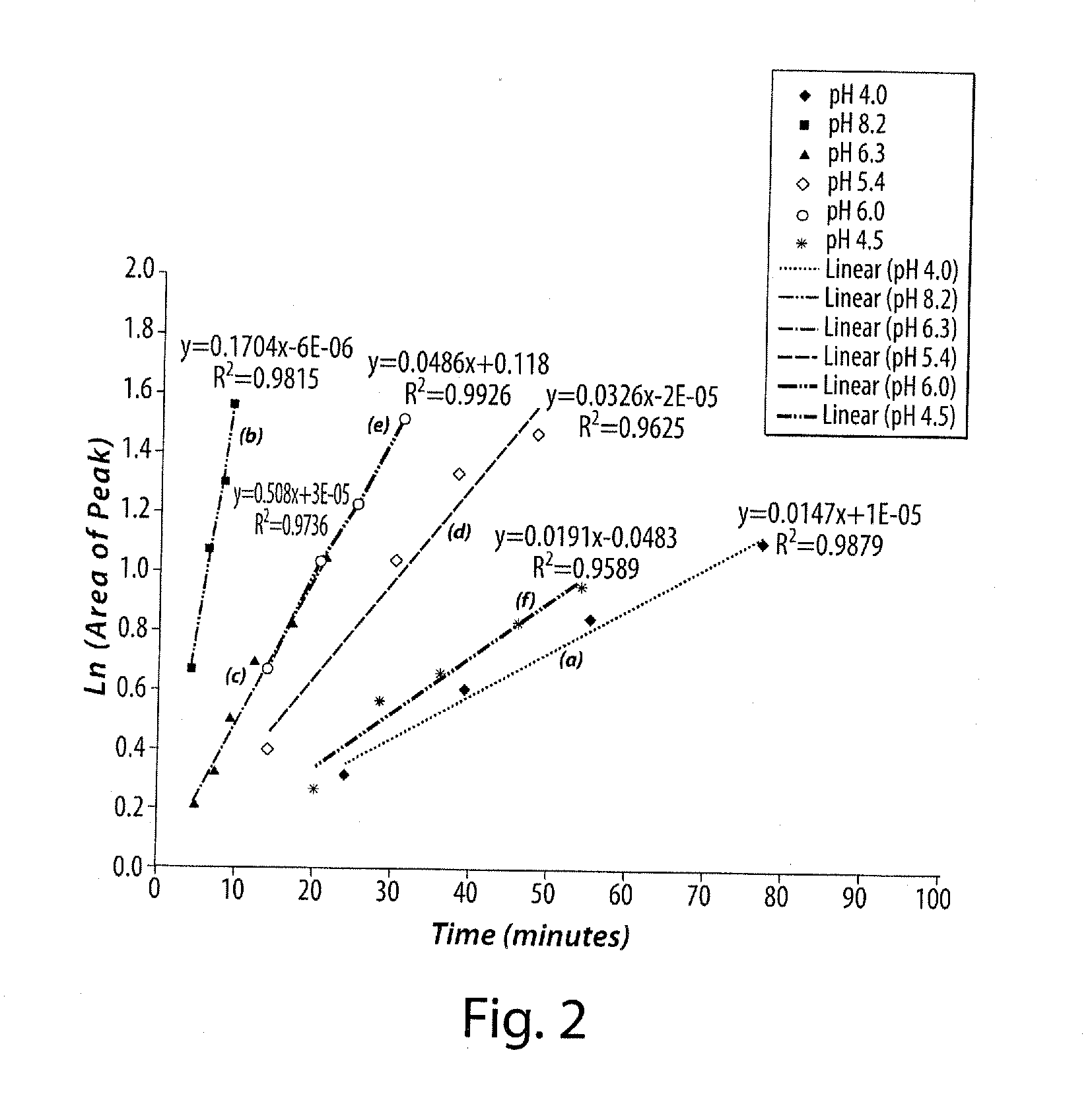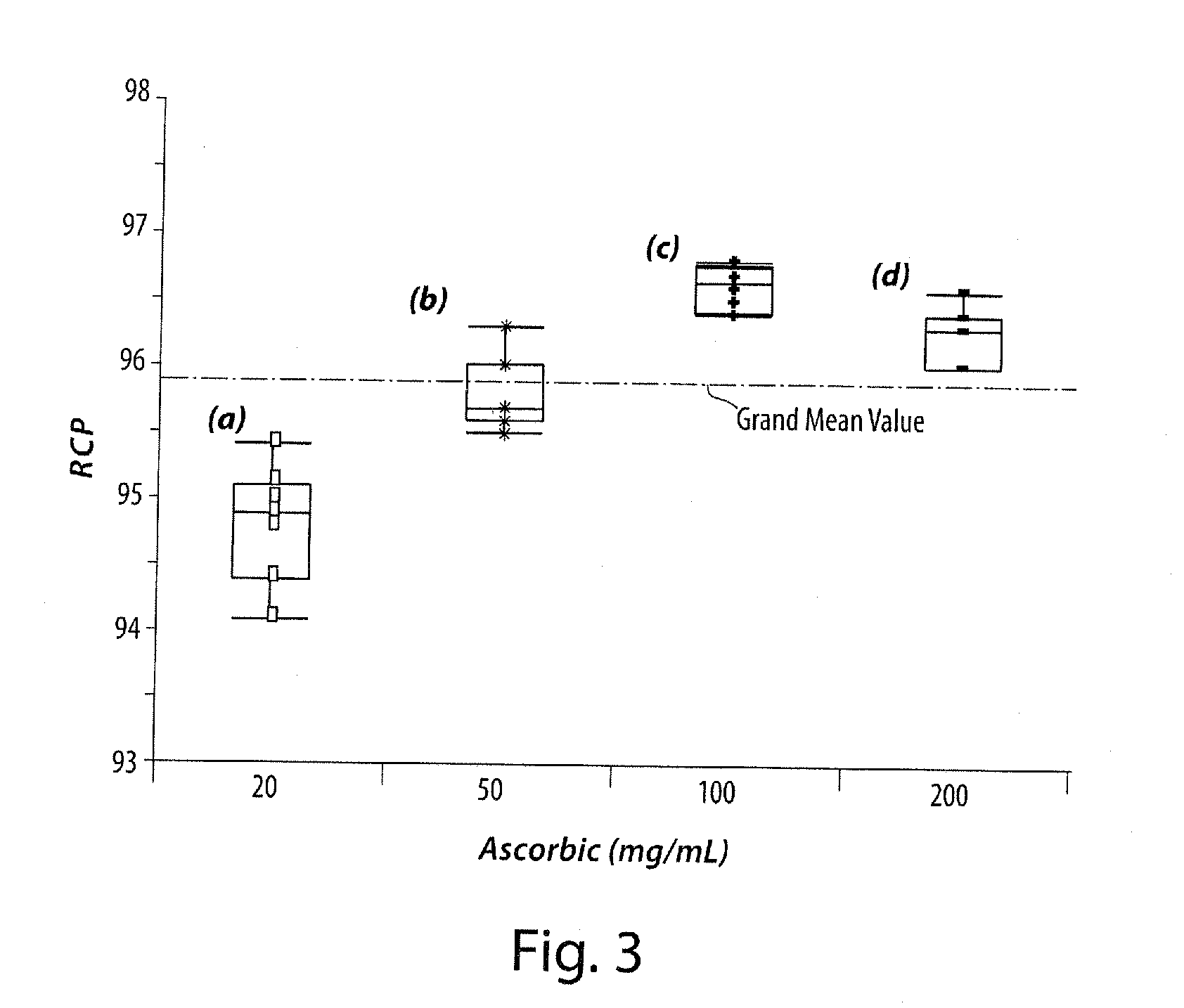Stabilization of radiopharmaceutical compositions using ascorbic acid
a radiopharmaceutical composition and ascorbic acid technology, applied in the direction of drug compositions, antinoxious agents, therapy, etc., can solve the problems of triggering the chemical decay of the dose, reducing the quality of the composition, and relatively short half-life of many isotopes
- Summary
- Abstract
- Description
- Claims
- Application Information
AI Technical Summary
Benefits of technology
Problems solved by technology
Method used
Image
Examples
example 1
Synthetic Procedure for Preparation of 18F Myocardial Perfusion Imaging Radiotracer for pH Stabilization Studies
[0076]Potassium carbonate (K2CO3, USP grade, 10 mg) was dissolved in distilled / deionized water (H2O, 1 mL) and was added with agitation to a solution of 4,7,13,16,21,24-Hexaoxa-1,10-diazabicyclo[8.8.8]hexacosane (referred to as Kryptofix™, K222) in anhydrous acetonitrile (CH3CN, 4 mL), and an aliquot of the resulting solution (1 mL) was used to elute the 18F-bearing resin column. The radioactivity content of the column eluate was determined and the elute was transferred to the reaction vessel of the Explora RN Chemistry Module. This system was controlled by computer using the GINA-Star software. The eluted complex solution was concentrated to dryness (70-95° C.), argon bleed; partial vacuum (250-12 mbar)). This afforded a relatively dry, highly activated form of [18F]fluoride. The solution of the corresponding toluenesulfonate ester of the desired radiotracer dissolved in ...
example 2
Purification of 18F Myocardial Perfusion Imaging Radiotracers and Preparation of Dose for pH Stabilization Studies
[0077]After the reaction was complete, the acetonitrile was evaporated (55° C., argon bleed; partial vacuum (250-15 mbar)) and the reaction mixture was suspended in mobile phase (60% acetonitrile / 40% 50 mM ammonium acetate in water, 1.3 mL). The mixture was drawn into a sample loop and injected onto a HPLC column (Phenomenex Synergi 4 μHydro-RP C18, 250×10 mm). The mixture was purified via chromatography under isocratic conditions (60% acetonitrile / 40% 50 mM ammonium acetate in water, 5 ml / min, 36 min. run time). The radiosynthesis module (Explora RN Chemistry Module) is equipped with both UV (254 nm) and Geiger-Mueller (GM) detectors.
[0078]The fraction containing the labeled radio-tracer was collected into a vial. Ascorbic acid solution having an ascorbic acid concentration of 50 mg / mL (10-15 mL) was added, and the solution was passed through a Sep-Pak® cartridge (previ...
example 3
Determination of the Effect of pH Value on the Stabilization of Radiotracer Dose Solutions
[0079]A series of ascorbic acid solutions at various pH values was formulated, each solution containing 5 μg / mL of a cold, 19F-analog of the radiopharmaceutical compound, 2-tert-butyl-4-chloro-5-[4-(2-[18F]fluoro-ethoxymethyl)-benzyloxy]-2H-pyridazin-3-one (e.g., BMS-747158-01 (API)), ethanol / water (5 / 95), and 50 mg / mL ascorbic acid. The pH of each solution was adjusted by addition of a stock aqueous solution of either hydrochloric acid or sodium hydroxide. as required. The list of solutions is shown in Table 1. Radiolysis was initiated by the addition of Na18F into the solution containing the cold, 19F-analog of the radiopharmaceutical compound, and the solutions were monitored via the HPLC analysis method for radiochemical purity over a (minimum) 6 hour period. The solutions were analyzed using a C18 RP-HPLC column with a gradient mobile phase and the elution profile was monitored using both ...
PUM
| Property | Measurement | Unit |
|---|---|---|
| Force | aaaaa | aaaaa |
| Mass | aaaaa | aaaaa |
| Mass | aaaaa | aaaaa |
Abstract
Description
Claims
Application Information
 Login to View More
Login to View More - R&D
- Intellectual Property
- Life Sciences
- Materials
- Tech Scout
- Unparalleled Data Quality
- Higher Quality Content
- 60% Fewer Hallucinations
Browse by: Latest US Patents, China's latest patents, Technical Efficacy Thesaurus, Application Domain, Technology Topic, Popular Technical Reports.
© 2025 PatSnap. All rights reserved.Legal|Privacy policy|Modern Slavery Act Transparency Statement|Sitemap|About US| Contact US: help@patsnap.com



